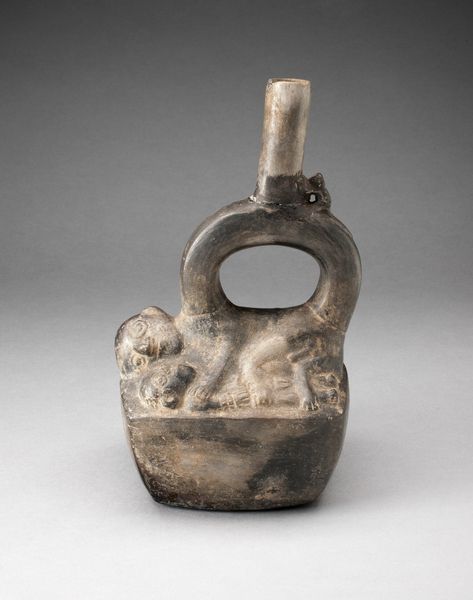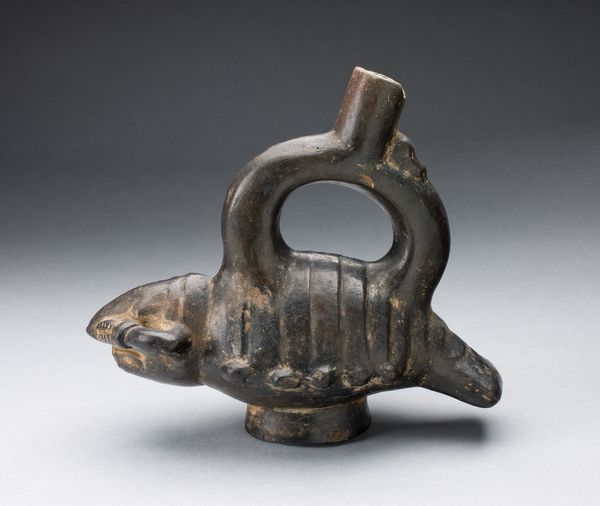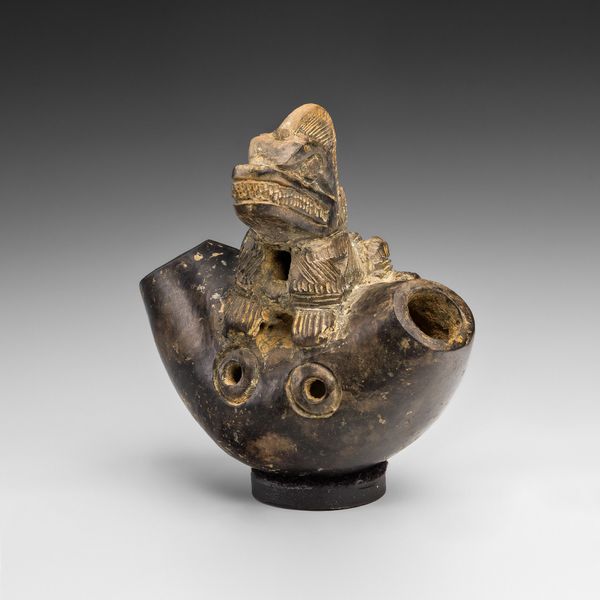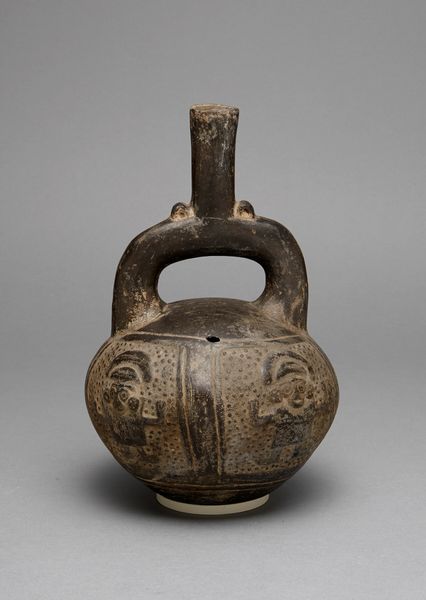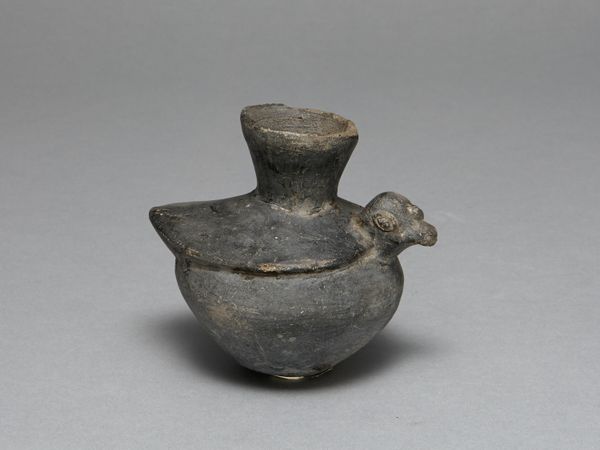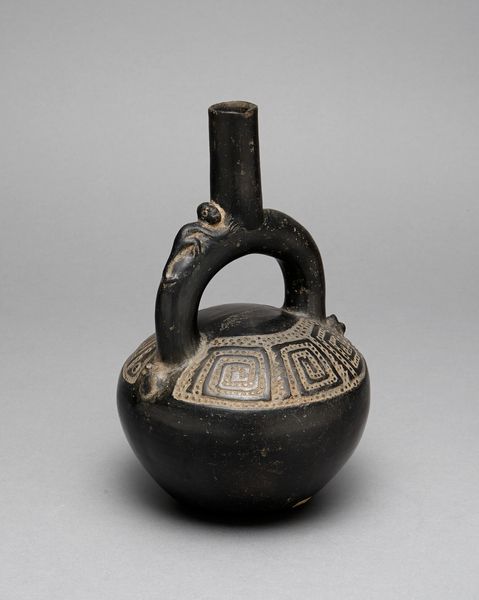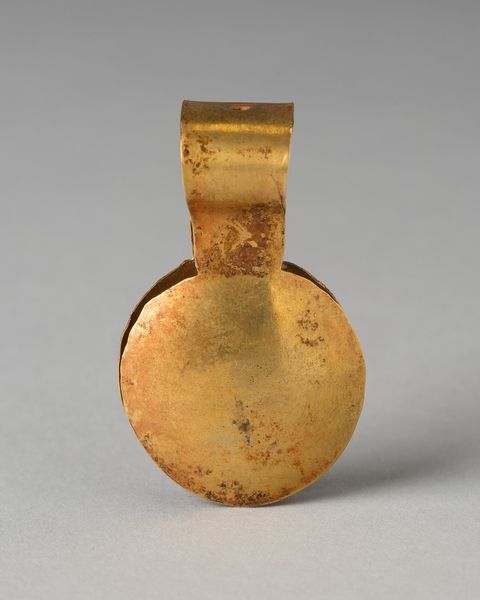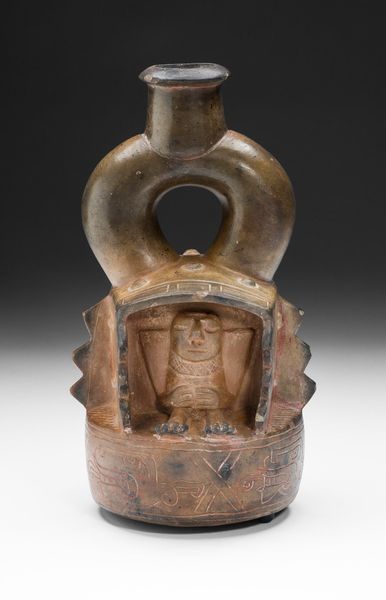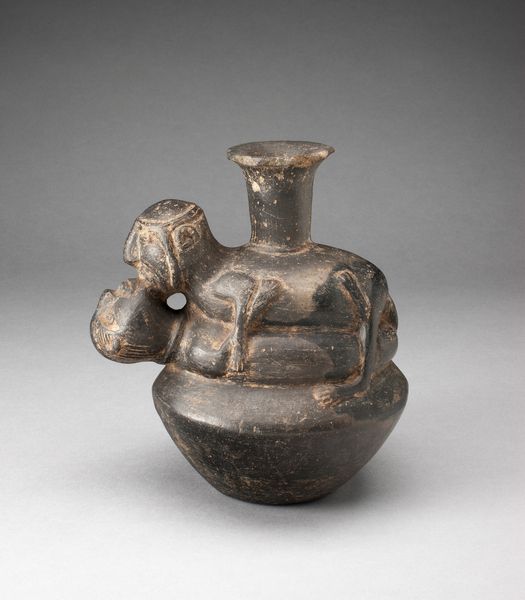
Pitcher in the Form of an Open Mouthed Animal with Geometric Incising on Back Possibly 1000 - 1400
0:00
0:00
ceramic, inorganic-material
#
3d sculpting
#
egg art
#
rounded shape
#
war
#
ceramic
#
jewelry design
#
ring
#
sculptural image
#
vessel
#
stoneware
#
wash background
#
inorganic-material
#
latin-american
#
watercolour illustration
#
graphite
Dimensions: 8.3 × 6.4 cm (3 1/4 × 2 1/4 in.)
Copyright: Public Domain
This small pitcher, crafted by the Chimú people, features an open-mouthed animal form with geometric incisions. The Chimú civilization thrived in ancient Peru, from around 900 to 1470 AD, in a stratified society with skilled artisans. Such pottery vessels, often found in burial sites, were not merely functional. The animal form suggests a ritual or symbolic purpose, potentially linking the vessel's contents to the spiritual realm. The geometric patterns further emphasize this connection, serving as visual codes within Chimú culture. The Chimú kingdom was known for its complex irrigation systems and agricultural prowess, with access to water playing a crucial role in wealth and power. Perhaps this pitcher was used for offerings related to water or agricultural fertility. To understand this object more deeply, historians consult archaeological reports, and ethnographies of Andean cultures. These provide vital context, reminding us that art objects are always embedded in social and institutional contexts, and can tell us a great deal about past societies.
Comments
No comments
Be the first to comment and join the conversation on the ultimate creative platform.
